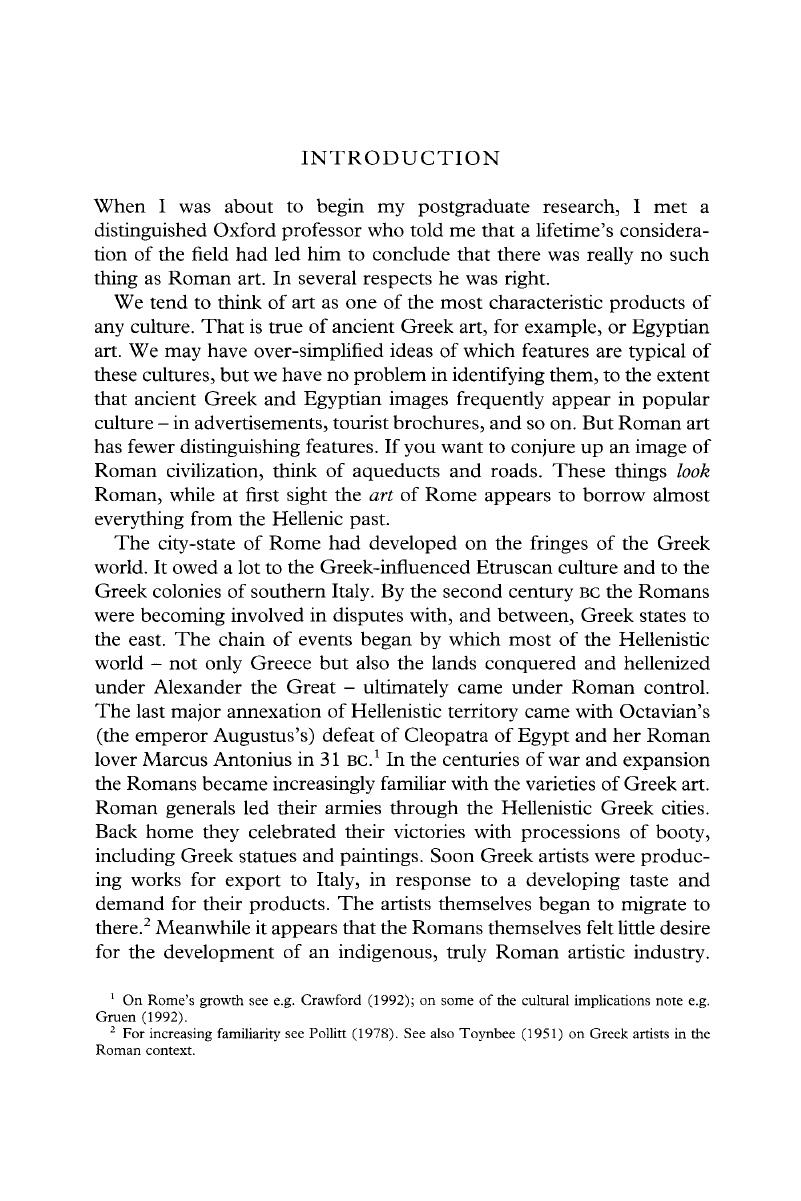No CrossRef data available.
Article contents
Introduction
Published online by Cambridge University Press: 05 February 2016
Abstract

- Type
- Introduction
- Information
- Copyright
- Copyright © The Classical Association 2004
References
1 On Rome’s growth see e.g. Crawford (1992); on some of the cultural implications note e.g. Gruen (1992).
2 For increasing familiarity see Pollitt (1978). See also Toynbee (1951) on Greek artists in the Roman context.
3 Virgil, Aeneid 6.847–53 (c.26–19 BC). Cf. Horace, Epistles 2.1.156: ‘Captive Greece took captive her savage conqueror, and brought the arts to rustic Latium . . .’ (c. 12 BC).
4 Toynbee (1951).
5 An essential discussion of the problem of Roman art is to be found in Brendel (1979); see his p. 6 for the comparison with Greek and Egyptian art.
6 Note Beard and Henderson (2001), dealing with Graeco-Roman art and our relationship with it.
7 For gems and other ‘minor’ and luxury arts see Henig (1983b). On gems see also Zazoff (1983); Henig (1994), x–xii.
8 On some Romano-British and other provincial art see Chapter Three.


